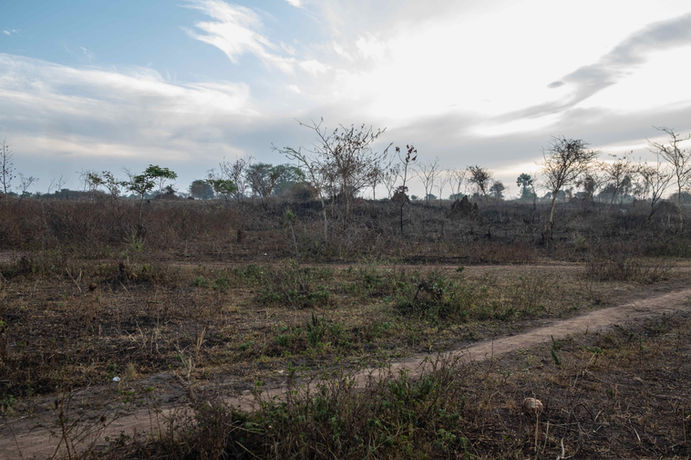15.01.2025 - The Beginning
On a hot January day, our team set out on a 200-kilometer journey to Jeeja — a small, quiet village nestled within Kigumba Town Council in Kiryandongo District, northwestern Uganda. This trip marked the beginning of our baseline research for the Apollo Forest Project, a vision to restore nature and empower communities through reforestation.
When we arrived, the landscape told its own story. The ground was dry and cracked, the vegetation a dull shade of brown. For months, the community had faced severe food shortages brought on by prolonged dry seasons. The need for restoration was clear.

In the months leading up to this trip, we had explored several potential sites for the project. We were searching for a place that truly needed transformation—a space where we could start from zero and document every step of change our efforts would bring. Jeeja offered exactly that: a challenge and an opportunity.

To better understand the area and its people, we partnered with researcher Erinah Biyinzika, who helped us conduct research sessions with community members. These conversations gave us valuable insights into the social, environmental, and economic realities of Jeeja—insights that would guide how we engage and collaborate going forward.
Our approach believes privatization can play a crucial role in protection and preservation. By privately acquiring the land, we could safeguard it from exploitation while working hand-in-hand with the local community to achieve shared goals.
During our discussions, we asked the community members some questions:
-
What types of trees naturally grow in this area?
-
Which species are disappearing?
-
What trees do they prefer for reforestation or commercial use?
-
How has their environment been changing over the years?
-
What actions are being taken to protect and preserve their environment?
-
How can we partner in restoring the environment?
Their responses emphasized what we already knew; that indigenous trees were being lost, replaced by fast-growing commercial species favored by farmers. This shift threatened the ecological balance and long-term sustainability of the environment.

Armed with this understanding, we began walking through Jeeja—literally and figuratively—mapping out the landscape and thinking deeply about how to regreen our parcel of land, and create a lasting change with the community. Our next step: finding ways to motivate and support the community to engage in reforestation alongside us, not as beneficiaries, but as partners in restoration.
Jeeja represents the start of something bigger—a living experiment in how environmental restoration and community stewardship and empowerment can go hand in hand. The Apollo Forest Project is not just about planting trees; it’s about hope, resilience, and a sustainable future.

One of the most important lessons we learned from our first project site was the value of working with scientists who specialize in their fields. So, when we acquired our new 20-acre plot for the Apollo Forest Project, we knew our first step wasn’t to plant trees—it was to understand the soil that would sustain them.
14.03.2025 - understanding the Soil Beneath
One of the most important lessons we learned from our first project site was the value of working with scientists who specialize in their fields. So, when we acquired our new 20-acre plot for the Apollo Forest Project, we knew our first step wasn’t to plant trees—it was to understand the soil that would sustain them.

Together with a soil scientist - Francis Akitwine and his team, we set out to study the land. We conducted field visits, carefully collecting soil samples from different sections of the plot. These samples were taken back to the lab at Makerere University for testing, and a few weeks later, we received the results—detailed data that gave us a clear picture of the land’s composition, strengths, and challenges.

Jepther Kusasira carrying out field research.
The findings were eye-opening. The soil varied significantly across the 20 acres, which meant not every area could support the same kind of trees. Some parts were rich and loamy, ideal for indigenous species, while others were compacted and nutrient-poor—especially areas that had served as cattle grazing grounds for years. The repeated trampling had hardened the soil, making it difficult for roots to penetrate and for water to be absorbed.

The soil varied significantly across the 20 acres.
With the scientist’s input, we are learning how to handle the land more responsibly—how to till it, how to naturally restore its fertility, and how to choose the right tree species for each zone. The recommendations we received have since shaped our planting strategy and guided our reforestation efforts.


By collaborating with experts early on, we avoided common mistakes that could have cost us years of progress. This experience reaffirmed our belief that successful reforestation starts beneath the surface—with healthy, living soil.
Every tree we plant now grows on knowledge as deep as its roots.



